Space
Why we will never live in space?
Published
2 months agoon


Why we will never live in space?
Important points of the article:
- Humans have evolved to live in the conditions of the earth and have adapted to it. If we leave the earth, we will face many problems both physically and mentally.
- The risk of cancer due to exposure to cosmic rays and the problems that the human body experiences in microgravity conditions alone can be devastating.
- Presence in the other world may not be economically justified. There has long been little public support for massive investment in space travel.
- Attempts to inhabit other planets are associated with numerous other problems, including contaminating other celestial bodies or transferring contamination to Earth.
Why we will never live in space?
NASA plans to return astronauts to the moon in a few years and is investing heavily to realize this project called the Artemis program . Artemis is part of an ambitious and risky plan for a more permanent human presence in the extraterrestrial world.
Companies such as Launch and Launch Alliance and Lockheed Martin are also designing infrastructure for habitation on the moon. Elon Musk has also claimed that SpaceX will turn Mars into a human settlement. But since outer space is designed to kill us, are these plans realistic? Scientific American has addressed the issue of the possibility of human habitation in space and listed the important obstacles facing this goal.
At this year’s Analog Astronaut Conference, none of the problems associated with human habitation in space seemed insurmountable. Scientists and space enthusiasts gathered in Biosphere 2. Biosphere 2 is a small simulated Earth near Tucson, Arizona that contains different biomes of Earth. Among the crowd of participants at the conference, it seemed to be a foregone conclusion that life in space is the inevitable destiny of humans and that we must eventually achieve it.
Biosphere 2 Research Center in Arizona has a greenhouse.
In 1991, eight people entered Biosphere 2 and lived there for two years. This strange building with an area of approximately 12,700 square meters is a place where scientists have simulated different environments. In addition to learning about Earth’s ecology, one of the goals of this research center has been to understand how humans can live in space.
The risk of cancer caused by cosmic rays and the problems that the human body experiences in microgravity conditions can be devastating.
Life practice in Biosphere 2 was not successful. The enclosed environment did not produce enough oxygen, water, and food for its inhabitants. The first mission and the second mission, which took place a few years later, were stopped due to interpersonal conflicts and psychological problems among the residents.
Today, people participating in projects like Biosphere 2, which simulate some aspects of long-duration space travel, are called “analog astronauts.” There are analog spaceflight facilities in places as diverse as Utah, Hawaii, Texas, and Antarctica. People in Oman, Kenya, and other countries are also building or planning them. The common goal of all those programs is to learn how we can live away from Earth.
Read More: Catching the first “space wind” by James Webb
Some of the people in Biosphere 2 have participated in simulation projects or built analog spaceflight facilities themselves, and some have come there out of curiosity. Astronomers, geologists, retired military personnel, corporate employees, medical professionals, artists, analysts, lawyers, and other business owners have also participated in this program.
From September 1991 to September 1993, eight people lived at the Biosphere 2 research facility in Arizona, helping scientists figure out how humans could live in space.
The human body cannot really tolerate space. Spaceflight damages DNA, alters the microbiome, disrupts circadian rhythms, impairs vision, increases the risk of cancer, reduces bone and muscle density, suppresses the immune system, and damages the heart. It weakens and drives fluids upwards, which may be harmful to the head in the long run.
Sonja Scherpfer at the University of California, San Francisco, has examined two of the conditions that affect space explorers. His research on mice floating in the International Space Station has shown that the blood vessels that reach the brain become harder in microgravity. Scherpfer and colleagues discovered a molecular pathway that may prevent these cardiovascular changes. However, according to him, maybe the hardening of the veins is a kind of protective mechanism, and loosening them causes other problems.
Scherpfer also wants to find a way to help astronauts’ fragile immune systems, which appear older and have a harder time repairing tissue when they’re in space. The immune system ages rapidly in microgravity conditions. On Earth, he collects biological samples from young and healthy people and sends them into space on tissue chips with astronauts to study how they degrade.
Vision and bone problems are also serious side effects of being in space. When astronauts spend a month or more in space, their eyeballs flatten. Flattening of astronauts’ eyeballs is one aspect of a condition called spaceflight-related eye syndrome, which can cause permanent vision damage.
Bones and muscles are built for life on Earth, which involves the constant pull of gravity. What the body does against gravity to be able to stand and move upright protects the muscles from atrophy and promotes bone growth.
Vision and bone problems are serious side effects of being in space
In space, where there is no gravitational force for the body to fight against, astronauts’ bones and muscles atrophy. That’s why they have to exercise for several hours every day and use special equipment. This equipment helps simulate some of the forces that their anatomy feels on the ground. Of course, even these exercises do not completely prevent muscle and bone atrophy.
Perhaps the most important concern about a body in space is radiation. While radiation is a manageable problem for today’s astronauts flying in low Earth orbit, it is a bigger problem for those going on longer journeys.
Some of the radiation comes from the sun, which emits free protons that can damage DNA and make astronauts seriously ill, especially during solar storms.
Astronauts can use water (for example, pumped into the walls of the shelter) to protect themselves against protons emitted from the sun. However, scientists cannot predict exactly when the Sun will emit large amounts of these particles. So, if, for example, astronauts are exploring the surface of the moon and a solar radiation storm is coming, at best we can predict such an event half an hour in advance. Therefore, we need better predictive power and astronauts to stay close to their blue shields.
If you don’t reach a safe place in time and you are exposed to particles emitted from the sun, you will feel nauseous first. Then you will vomit in your space suit. Vomit can disrupt life support systems or you may inhale it and block your airway. Then there is a decrease in cells such as neutrophils and red blood cells, meaning you can no longer fight germs or deliver oxygen to your tissues properly. You become tired, anemic, and unable to fight infection and you vomit frequently. You may even lose your life.
There is another type of radiation called “Galactic Cosmic Rays” that is not blocked by even a lot of water. These radiations are composed of high-velocity elements (mainly hydrogen, but also completely natural substances within the periodic table), are emitted from celestial events such as supernovae, and have much more energy and mass than a free proton. It is not possible to fully protect astronauts from these radiation. Inadequate shielding of the probes makes the problem worse: When the beams hit an obstacle, they split, producing smaller particles.
The amount of radiation that an astronaut en route to Mars might receive from galactic cosmic rays at any given moment is small, but if he is in a spacecraft or on the planet’s surface for years, the situation changes, and the risk of cancer increases.
Since creating a shield to protect astronauts is not a realistic solution, researchers are investigating how to help the body repair damage caused by radiation. They are also looking to design chemicals that astronauts could use to help repair DNA damage in their potential wounds.
In space, many physical and psychological problems threaten astronauts.
Even if most physical problems can be fixed, the brain is still the problem. A review article published in 2021 in the journal Clinical Neuropsychiatry discussed the psychological risks faced by astronauts in space travel: poor emotional regulation, reduced resilience, increased anxiety and depression, communication problems with the group, sleep disorders, and reduced cognitive and motor performance resulting in Stress occurs.
To visualize the cause of the described problems, imagine yourself inside a small tin can with a few other people, with a deadly atmosphere outside, a monotonous and boring schedule, an unnatural day and night cycle you have to endure, and mission controllers constantly checking on you. are under observation Of course, although physical and psychological problems are severe, they are not necessarily the most immediate obstacles to realizing space settlements.
The bigger issue is cost. Who is going to pay for the construction of the space settlement? If you think billionaire entrepreneurship is funding a space settlement out of adventure, altruism, or other reasons, you’re wrong. Commercial space companies are businesses, and the purpose of businesses is to make money. In the past few years, researchers have tried to estimate the demand for space exploration and extraterrestrial activities.
People usually liken space exploration to human expansion on Earth. But human expansion on earth has been associated with achievements such as mines or agricultural lands. This is while it is not clear what people will achieve by investing in the construction of a space settlement.
Celestial bodies, including the Moon, are at risk of contamination by microscopic Earth life.
Polls show that most people do not value the adventures of space and are not happy that the taxes that are collected from them go to these activities.
In 2018, in a survey, participants were asked to rate the importance of nine key NASA missions. Only 18 and 13 percent of people thought that sending humans to Mars and the Moon should be a priority. They prioritized efforts to monitor Earth’s weather, observe dangerous asteroids, and conduct basic research in space. Another poll in 2020 found that only 7-8% of respondents believed that sending humans to the moon or Mars should be a top priority.
Most people aren’t happy with their tax dollars being spent on space adventures.
Although history tends to record the previous era of moon travel and exploration as a period of global excitement, polls from the time suggest it was not: according to historians, with the exception of the poll taken at the time of the Apollo 11 moon landing in July 1969. done, during the 1960s most Americans believed that Apollo was not worth the cost. During this decade, in numerous polls, 45 to 60 percent of Americans believed that the government was spending too much on space.
When space agency officials discuss why people should care about human exploration, they often say that it benefits humanity, and sometimes point to things that have become Earth-based technology used by all citizens. One of these cases was the innovation of the telescope mirror, which improved laser eye surgery. However experts say that if you want a particular technology to advance, it’s better to invest directly in that technology instead of going indirectly through an organization like NASA, which costs more.
Aside from the discussion of the moral problem of spending taxes collected from people for space travel, the simpler moral question is, should we really send people into space for these purposes? Apart from the general risk of cancer and general deterioration of the body, the possibility of death of astronauts who intend to live in another world is higher, and even if they survive, many problems will plague them. The important thing is not only to survive but also to enjoy life. This is while living conditions in a place like Mars will be very difficult.
Another problem with human space travel is that microscopic Earth life, which NASA has never been able to completely remove from a spacecraft, may contaminate the Moon, Mars, or Europa. On the other hand, if the destination worlds have unknown life, harmful extraterrestrial microbes can return to Earth with their equipment and may threaten life on Earth.
The efforts of analog astronauts cannot solve the most difficult problems of space travel, including intractable medical problems, the need for huge investments, and important ethical problems; But while we all wait to find out if we will actually leave this planet, these earthbound astronauts will continue to try to escape without leaving the planet, at least for a while.


You may like
-

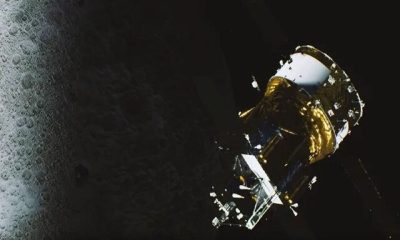


A mystery that is solved by the China’s Chang’e-6 probe!
-




Discover a new answer to the ancient mystery of a Venus!
-

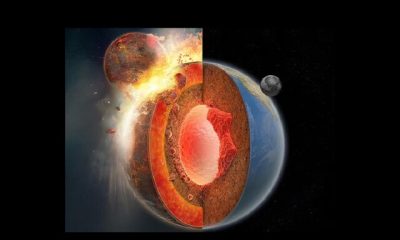


Discovering new evidence of the impact that formed the Earth’s moon
-

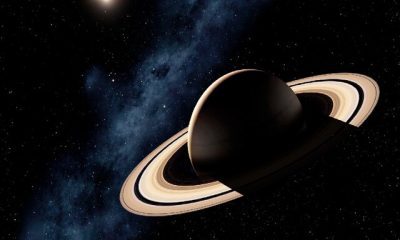


Maybe alien life is hidden in the rings of Saturn or Jupiter
-

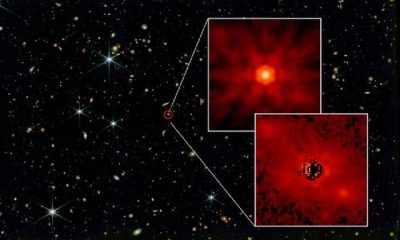


Discovering new clues about the formation of the world’s first black holes
-




NASA is going to space exploration with a 36-pixel camera
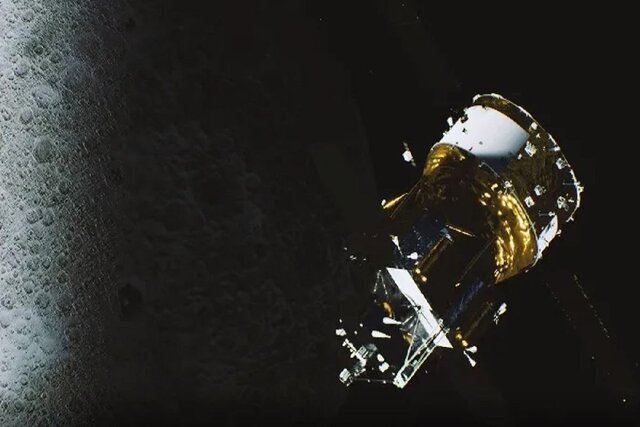

China’s Chang’e-6 probe, launched to retrieve samples from the far side of the moon, has a big mystery to solve about Earth’s moon.
A mystery that is solved by the China’s Chang’e-6 probe!
China’s Chang’e-6 mission, which is currently on its way to bring back samples from the far side of the moon, will help investigate theories about why the far and near sides of the moon differ.
According to Space, Changi 6 is expected to land in early June in the Apollo impact basin, which is located within the larger South Pole–Aitken basin.
The Aitken Antarctic Basin is the largest collisional feature of its kind in the solar system, with an area of 2,400 x 2,050 km. This basin was formed about 4.3 billion years ago, which is very early in the history of the solar system.
Although the Apollo Basin is younger, it is the largest impact site within the Aitken Antarctic Basin. Apollo has a two-ring structure, the inner ring consists of mountain peaks with a diameter of 247 km, and the outer ring is about 492 km wide.
The Chang’e-6 mission was launched on May 3 from the Wenchang Satellite Launch Center in Hainan Province, located in southern China, and went to the moon on a Long March 5 rocket.
As the first mission to bring samples from the far side of the moon, Changi 6 is supposed to bring back about two kilograms of precious lunar material. The far side of the moon is a relatively unknown place. The fact that we can’t see the far side of the moon from Earth adds to its mystery. For the first time, the Soviet Union’s “Luna 3” spacecraft photographed the far side of the moon in 1959.
With that photo, scientists around the world were amazed to see how different the far side of the moon is from the side we are familiar with. Although both the far and near sides have many craters, the near side also contains vast volcanic plains called “lunar maria” that cover about 31% of it.
The far side of the moon is opposite and volcanic plains cover only about 1% of it.
So how did the far side and the near side become so different? It seems that the thickness of the shell is one of the factors. In fact, NASA’s GRAIL mission found in 2011 that the far-side crust is on average 20 kilometers thicker than the near-side crust.
The reason for this is thought to be that our moon was formed from debris from the impact of a Mars-sized planet on Earth about 4.5 billion years ago. As the Moon formed from that debris, it became tidally locked. This means that it always shows the face of our planet.
The surface of the earth was completely melted by that big impact and it radiated heat towards the near side of the moon and kept itself molten for a longer time. Scientists believe that the rock vaporizes on the near side and condenses on the colder side, thickening the crust on the far side.
Hong Kong University (HKU) researcher Yuqi Qian is one of the lead researchers on a new project that shows that a sample to be returned to Earth by Chang’e 6 could test this theory. Keyan said: Basic findings show that the difference in crustal thickness between the near and far sides may be the main cause of the difference in the moon’s volcanism.
In places like most distant parts where the Moon’s crust is thick, magma can’t seep through fractures to the surface. In areas such as the near side where the crust is thin, fractures can allow magma to seep in and lead to lava eruptions.
The Aitken and Apollo Antarctic Basins, despite both being on the far side of the Moon, create contradictions. That’s because they’ve gouged deeply into the Moon’s crust, and at the base of these giant impact sites, the crust is thinner than elsewhere on the far side. Volcanic plains also exist within these basins, but only five percent of their area is covered by basalt lava. This limited amount of volcanism seems to contradict the conventional idea that crustal thickness dictates volcanic activity. This creates a paradox in lunar science that has been known for a long time.
An alternative possibility suggests that the near side could contain more radioactive elements than the far side. These elements may have generated heat and led to the melting of the lower mantle. As a result, much more magma has formed and a thinner crust has formed on the near side. Hence, the volcano is more in this area.
However, by landing on one of the few volcanic plains on the far side, Chang’e 6 could provide samples to directly test such theories. In particular, the Apollo Basin area where Chang’e 6 will land contains a variety of materials that require investigation.
Some evidence shows that there were two major volcanic eruptions in this area. Scientists believe that one of them covered the entire region in magma containing a small amount of titanium around 3.35 billion years ago. The other, which probably occurred 3.07 billion years ago, probably contained titanium-rich magma and erupted near the Chaffee S crater. Thus, the thickness is reduced.
Read more: Discovering new evidence of the impact that formed the Earth’s moon
New research shows that bringing samples from near the Chafi S crater will bring the most scientific benefits. This area has titanium-rich basalt in the upper part, titanium-free basalt in the lower part, and various pieces of projectile material from the impact.
“Joseph Michalski” (Joseph Michalski), a researcher at the University of Hong Kong and one of the researchers of this project said: “Diverse sample sources provide important information to answer a set of scientific questions about the Moon and the Apollo Basin.”
These diverse samples can also provide scientists with information about magmatic processes occurring on the far side of the moon. By comparing them with nearby samples brought back to Earth by the Apollo missions, scientists may be able to answer the question of why the number of volcanoes on the far side of the Moon is so limited.
This research was published in the journal “Earth and Planetary Science Letters”.
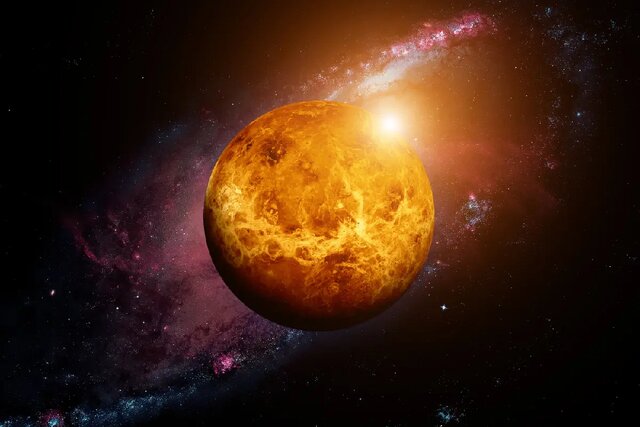

New research from the University of Colorado Boulder shows that Venus is losing water faster than previously thought, which could provide information about the planet’s early habitability.
Discover a new answer to the ancient mystery of Venus!
Today, the atmosphere of Venus is as hot as an oven and drier than the driest desert on Earth, but our neighboring planet was not always like this.
According to Converse, billions of years ago, Venus had as much water as Earth today. If that water was once liquid, then Venus was probably once habitable.
Over time, almost all of Venus’s water reserves have been lost. Understanding how, when, and why Venus lost its water reserves will help planetary scientists understand what makes a planet habitable, or what can turn a habitable planet into an uninhabitable one.
Scientists have theories to explain why most of the water supplies have disappeared, but the amount of water that has disappeared is actually greater than predicted.
Research conducted at the University of Colorado Boulder (CU Boulder) reports the discovery of a new water removal process that has been overlooked in recent decades but could explain the mystery of water loss.
Energy balance and premature water loss
The solar system has a habitable zone. This region is a narrow ring around the Sun where planets can have liquid water on their surface. Earth is in the middle of the habitable zone, Mars is outside on the very cold side, and Venus is outside on the very hot side. The place of a planet in this habitable spectrum depends on the amount of energy received by the planet from the sun and also the amount of energy emitted by the planet.
The theory of how Venus loses water reserves is related to this energy balance. Sunlight on early Venus decomposed the water in its atmosphere into hydrogen and oxygen. Hydrogen warms a planet’s atmosphere, acting like having too many blankets on the bed in the summer.
When the planet gets too hot, it throws the blanket away. Hydrogen escapes into space in a process called “hydrodynamic escape”. This process removed one of the key elements, water, from Venus. It is not known exactly when this process occurred, but it was probably around the first billion years of Venus’ life.
Hydrodynamic volatilization stopped after most of the hydrogen was removed, but some hydrogen remained. This process is like pouring out the water in the bottle, after which there are still a few drops left in the bottle. The remaining droplets cannot escape in the same way, but there must be another process on Venus that continues to remove the hydrogen.
Small reactions and big differences
This new research suggests that a neglected chemical reaction in Venus’s atmosphere could produce enough volatile hydrogen to close the gap between the missing water supply and the observed water supply.
The way this chemical reaction works is in the research of the University of Colorado Boulder. In the atmosphere, HCO ⁺ gas molecules, which are composed of hydrogen, carbon, and oxygen atoms and have a positive charge, combine with negatively charged electrons.
When ⁺ HCO and electrons react, ⁺ HCO breaks down into a neutral carbon monoxide molecule, CO, and a hydrogen atom. This process gives the hydrogen atom the energy it needs to exceed the planet’s speed and escape into space. The whole reaction is called HCO ⁺ dissociative recombination, but the researchers abbreviated it as DR.
Water is the main source of hydrogen on Venus. Thus, the DR reaction dries out the planet. The DR reaction probably happened throughout the history of Venus, and this research shows that it probably continues to this day. This reaction doubles the rate of hydrogen escape previously calculated by planetary scientists, changing their understanding of current hydrogen escape on Venus.
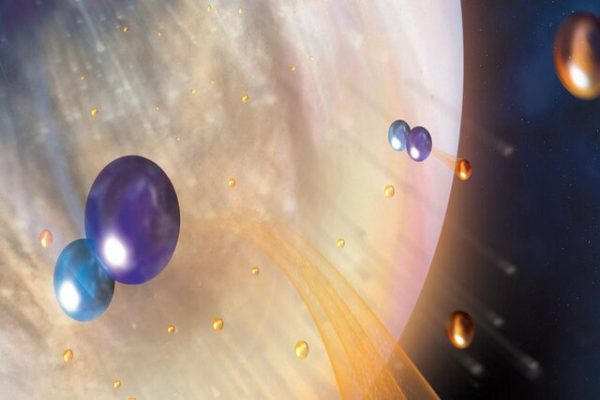

Understanding the conditions of the planet Venus with data and computer models
Researchers in this project used computer modeling and data analysis to study DR in Venus.
Modeling actually began as Project Mars. Mars also had water before – though less than Venus – and lost most of it.
To understand the escape of hydrogen from Mars, the researchers created a computational model of the Martian atmosphere that simulated the chemistry of the Martian atmosphere. Despite being very different planets, Mars and Venus have similar atmospheres. Therefore, the researchers were able to use this model for Venus as well.
They found that the DR reaction produced large amounts of fugitive hydrogen in the atmospheres of both planets. This result is consistent with observations made by the Mars Atmospheric and Volatile Evolution Mission (MAVEN) orbiting Mars.
Collecting data in the Venus atmosphere would be valuable to support the computer model, but previous missions to Venus have not measured ⁺ HCO; Not because it doesn’t exist, but because they weren’t designed to detect it. However, they investigated the reactants that produce HCO ⁺ in Venus’s atmosphere.
By analyzing observations made by the Pioneer probe and using their knowledge of the planet’s chemistry, the researchers showed that ⁺ HCO is likely present in the atmosphere in similar amounts to the computer model.
Searching for water
This research has solved part of the puzzle of how planetary water reserves are lost, which affects how habitable a planet is. We have learned that water loss occurs not only in one moment but over time and through a combination of methods.
Read more: Maybe alien life is hidden in the rings of Saturn or Jupiter
The faster loss of hydrogen through the DR reaction means that it takes less time overall to remove the remaining water on Venus. Also, this means that if oceans existed on early Venus, they could have existed for much longer than scientists thought. This allows more time for potential life to develop. The research results do not mean that oceans or life definitely existed. Answering this question requires more science.
The need for new missions and observations of Venus is felt. Future missions to Venus will provide some atmospheric surveys but will not focus on its atmosphere. A future mission to Venus, similar to the Moon’s mission to Mars, could greatly expand our knowledge of how the atmospheres of terrestrial planets form and evolve over time.
With technological advances in recent decades and renewed interest in Venus blossoming, now is a great time to turn our gaze to Earth’s sister planet.
Space
Discovering new evidence of the impact that formed the Earth’s moon
Published
3 days agoon
09/05/2024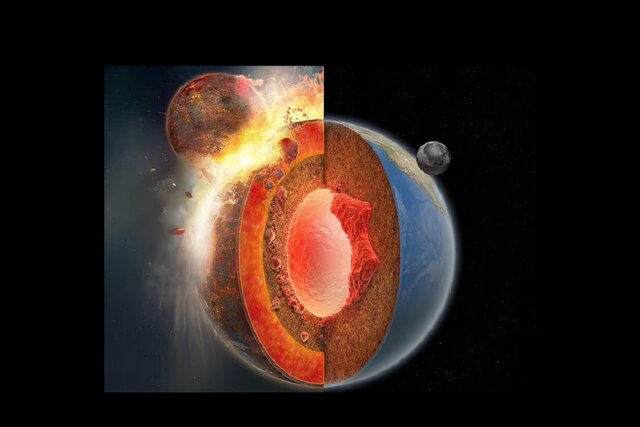

Discovering new evidence of the impact that formed the Earth’s moon. Data from NASA’s GRAIL spacecraft have found large deposits of iron-titanium ore deep on the moon’s surface, suggesting the remnants of Earth’s moon Thea.
Discovering new evidence of the impact that formed the Earth’s moon
A study on a metallic mineral from deep within the moon has provided new evidence that the natural moon of Earth was formed long ago by the impact of an ancient planet.
According to the Daily Mail, this long-theorized interplanetary collision, which scientists believe occurred about 4.5 billion years ago, describes a Mars-sized planet called Theia that, after colliding with Earth, It turned into pieces of hot lava.
Although some of the remnants of Theia appear to have been buried in large, dense blobs deep in the African and Pacific tectonic plates, evidence remains unclear as to where the rest of Theia went after the crash, scientists said.
Now, new data from NASA’s GRAIL spacecraft have found large deposits of iron-titanium ore deep within the moon’s surface, suggesting that other remnants of Theia actually formed Earth’s moon.
Adrien Broquet, a planetary geophysicist at the German Aerospace Center (DLR), described the GRAIL findings as fascinating.
A new paper by Brockett’s group focuses on gravitational anomalies deep within the Moon’s surface. These anomalies are dense, heavy pockets of matter detected by the GRAIL spacecraft’s sensors. “Analyzing these changes in the moon’s gravitational field allowed us to probe beneath the moon’s surface and see what lies beneath,” Brockett said.
The GRAIL spacecraft detected two dense regions beneath the Moon’s crust in the region between the crust and the core, called the mantle, which correspond to deposits of titanium-iron ilmenite. If the Tia collision theory is correct, we can say that these reserves exist.
After Thea likely collided with Earth, and after pieces of the missing planet were buried deep in the Earth’s crust, pools of molten lava rich in titanium and heavy iron on the moon’s surface sank toward its core, pushing lighter rocks upward. Jeff Andrews-Hanna, a geophysicist at the Lunar and Planetary Laboratory at the University of Arizona (UArizona), said: Our moon literally turned upside down.


Computer models presented by Peking University (PKU) researcher Nan Zhang provided the main framework for the theory that titanium-rich material exists deep within the moon, and as a result, it can be said that the origin of the moon is fragments of The planet Tia.
“When we saw the model’s predictions, it was as if everything became clear to us,” Andrews-Hannah said. When we look at the subtle changes in the Moon’s gravitational field, we see the exact same pattern, which hides a network of dense material beneath the crust.
Earth-based research has identified two dense, unusual regions in our planet’s mantle, called LLVPs, which have given credence to the theory that an interplanetary collision created our moon Theia. One of the two LLVPs lies beneath the African tectonic plate and the other beneath the Pacific tectonic plate, which is monitored by seismic equipment similar to that used to detect earthquakes.
Their existence was discovered when geologists found that seismic waves are dramatically reduced at a depth of 2,900 kilometers in the two regions and are different from the rest of the Earth. Scientists believe that the material in these two LLVPs is between 2 and 3.5 percent denser than the mantle around Earth.
Last year, a group of researchers led by the California Institute of Technology (Caltech) came up with the idea that two LLVPs could have evolved from a small amount of Thia material that entered the lower mantle of the ancient Earth.
Read more: Why there is no gaseous moon in solar system?
To confirm this, they enlisted the help of Shanghai Astronomical Observatory (SHAO) researcher Professor Hongping Deng to investigate this idea using his pioneering methods in fluid dynamics.
After running a series of simulations, Deng found that following the impact, a significant amount of their material—about two percent of Earth’s mass—was injected into the lower mantle of the ancient planet Earth.
“Qian Yuan”, a geophysicist at the California Institute of Technology and one of the researchers of this project, said: “With a detailed analysis of a wider range of rock samples, along with collision models and models of the Earth’s evolution, we can infer the material composition and orbital dynamics of the early Earth.”
Their research was published in Nature magazine last year.


Skin cancer: symptoms, prevention and treatment


The strange ways skin affects our health


A mystery that is solved by the China’s Chang’e-6 probe!


Artificial intelligence identifies cancer killer cells


Discovery of new hydrothermal wells at a depth of 2.5 km in the ocean


The secret of the cleanest air on earth has been discovered


Xiaomi Pad 6S Pro review


The biography of Pavel Durov


Why do people listen to sad songs?


Inventing a new drug to treat influenza
Popular
-



 Technology9 months ago
Technology9 months agoWho has checked our Whatsapp profile viewed my Whatsapp August 2023
-



 Technology10 months ago
Technology10 months agoHow to use ChatGPT on Android and iOS
-



 Technology9 months ago
Technology9 months agoSecond WhatsApp , how to install and download dual WhatsApp August 2023
-



 Technology11 months ago
Technology11 months agoThe best Android tablets 2023, buying guide
-



 AI1 year ago
AI1 year agoUber replaces human drivers with robots
-



 Humans1 year ago
Humans1 year agoCell Rover analyzes the inside of cells without destroying them
-



 Technology10 months ago
Technology10 months agoThe best photography cameras 2023, buying guide and price
-



 Technology11 months ago
Technology11 months agoHow to prevent automatic download of applications on Samsung phones




